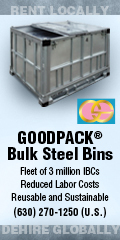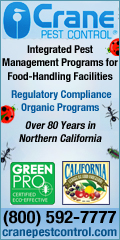
| Archives/Subscribe | www.clfp.com | Contact Us | February 3, 2015 |
New Air Toxic Hot Spot Guidelines Being Developed
The Office of Environmental Health Hazard Assessment (OEHHA) recently proposed updated "Air Toxic Hot Spots" (AB 2588) health risk assessment guidelines, and plans to finalize them within the next month or two. Despite significant reductions in stationary source emissions over the last two decades, OEHHA’s new guidelines have changed the way air quality health risk is estimated and will result in much higher estimates of risk. Facility risk estimates will increase by 1.5 to 3 times or more – even if there has been no change in a facility’s emissions. As a result, OEHHA and the California Air Resources Board (CARB) are now engaged in updating the risk management and risk communication guidelines as well.
Because of this change in risk estimation methods, existing risk-based air toxics regulations will capture far more local businesses that have air toxics emissions and will require these businesses to conduct new air toxics emission inventories and file reports with the state and local air districts. A greater concern is that these new guidelines will require many facilities to meet regulatory requirements that include formal notification to surrounding communities that their operations now pose a significant health risk to residents – even if there has been a reduction or no change to their emissions. Some businesses will also face regulatory barriers to permitting new equipment or even renewing existing air emission permits.
The risk communication guidelines--if not implemented thoughtfully by CARB, CAPCOA and local air quality districts--have the potential to create the false impression that air quality risks from stationary sources are on the rise, when the exact opposite is true. This perception will place greater pressure on politicians and local regulators to reduce air toxics emissions from affected facilities. Equally important, risk management guidelines could create unnecessary permitting problems and impose costly or unattainable risk mitigation measures that will undermine business operations and potentially the ability to obtain local air emission permits.
The California League of Food Processors (CLFP) has joined a coalition of businesses and industries to engage and urge CARB and thenCalifornia Air Pollution Control Officers Association (CAPCOA) to develop reasonable and thoughtful air toxics policies, including both risk communication and risk management guidelines, that can be incorporated into the successful ongoing programs and efforts used by local air quality districts.
The San Joaquin Valley Air Pollution Control District (SJVAPCD) recognized these likelihoods early on and adopted recommendations from staff aimed to avoid this outcome at their September 2013 Governing Board meeting. The SJVAPCD recognized that the new risk calculation methodology adopted by OEHHA would result in a higher calculated risk but that the increase would not be the result of increases in actual emissions or exposures to toxic air contaminants. As a result, the Air District intends to engage in careful and thorough communication with the public and to avoid unreasonable restrictions on permitting. The Air District will begin implementing the new procedures as soon as OEHHA finalizes them in the next couple of months. Specifically as to the Air Toxics Hot Spots program, the Air District will begin contacting facilities whose status may have changed due to the new risk estimation guidance toward the end of 2015. SJVAPCD expects the implementation will be spread out over several years.
The coalition is working to ensure that the CARB and CAPCOA guidelines being developed for local air districts will put any new facility health risk estimates into proper context when communicating such to the public. Similarly, CLFP believes that the risk management guidelines must recognize that, absent an actual increase in air toxics emissions, a given facility does not pose an increased risk to nearby communities. It is essential that all risk reduction requirements reflect such facts.
Article written by John Larrea, CLFP Director of Government Affairs
|
|
| CALIFORNIA LEAGUE OF FOOD PROCESSORS 2485 Natomas Park Dr., Suite 550 Sacramento, CA 95833 Phone: (916) 640-8150 Fax: (916) 640-8156 www.clfp.com |
 |

